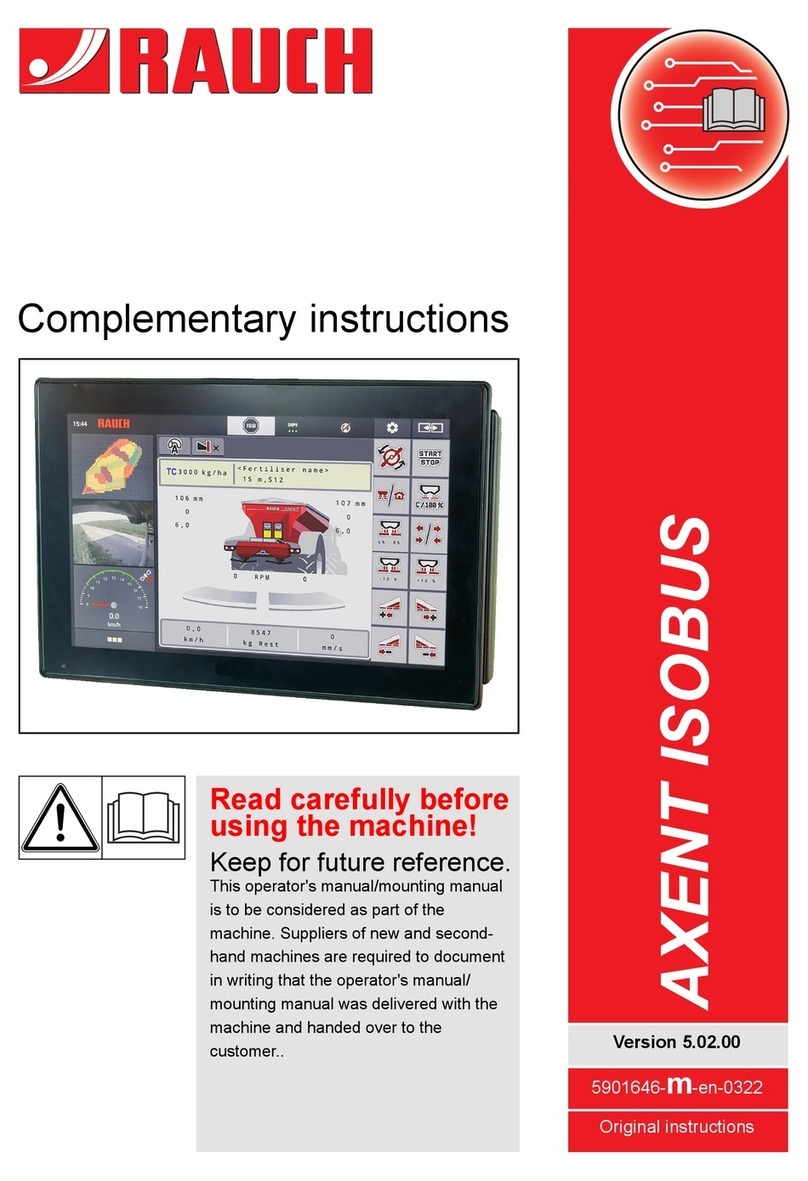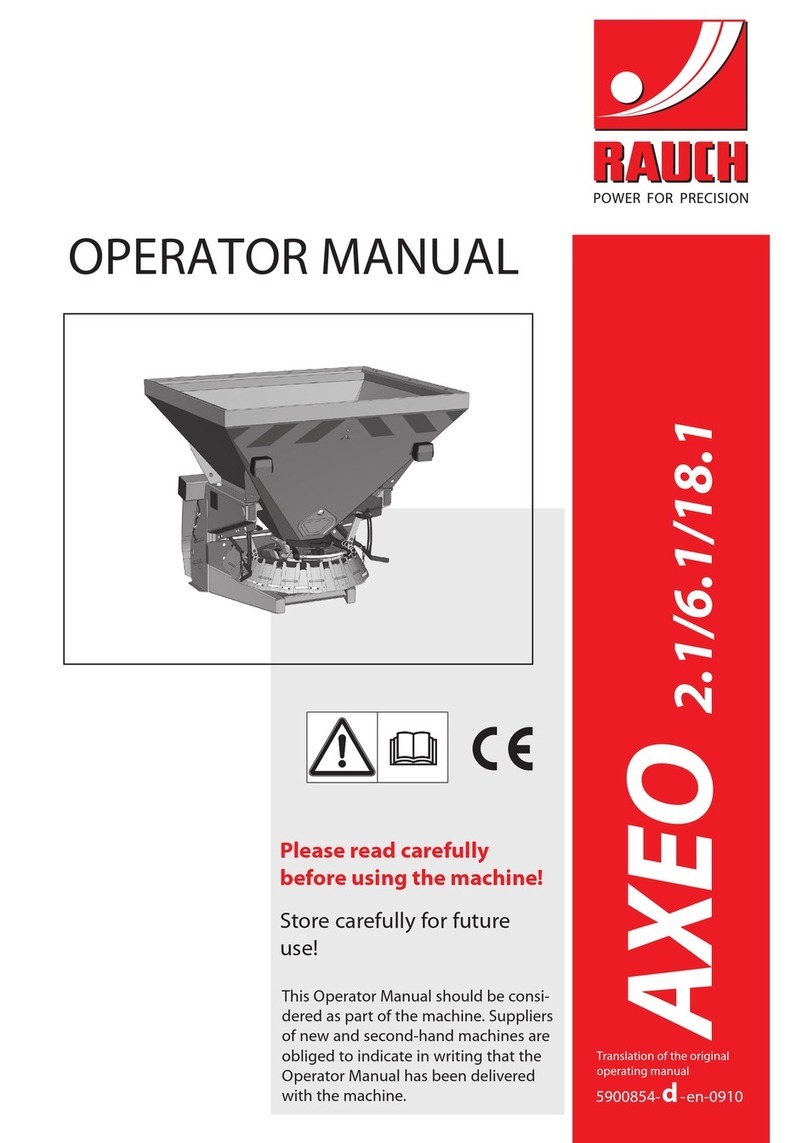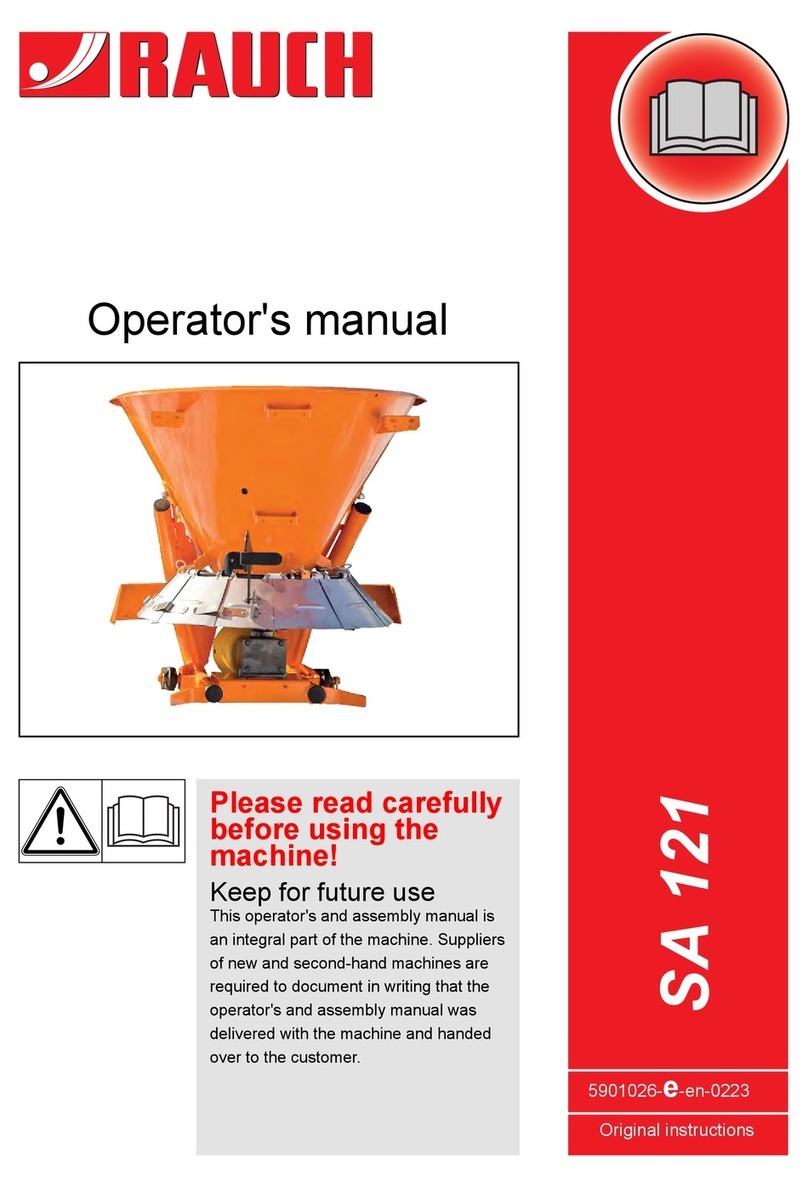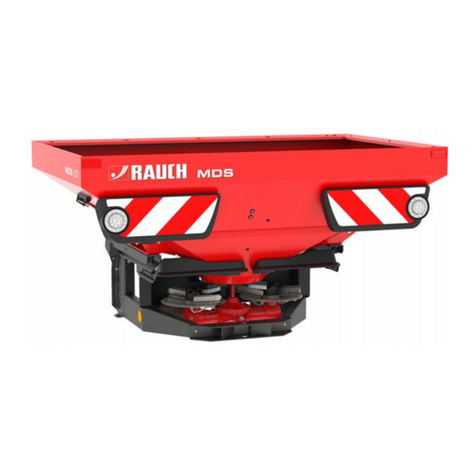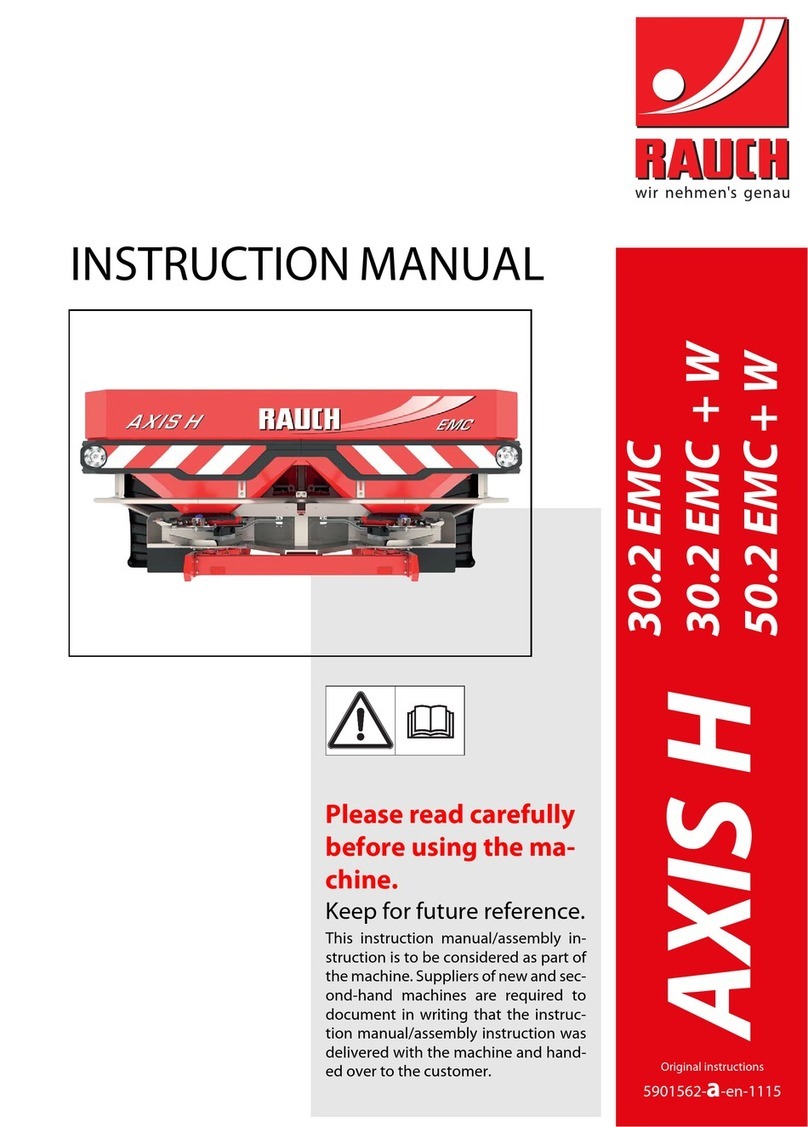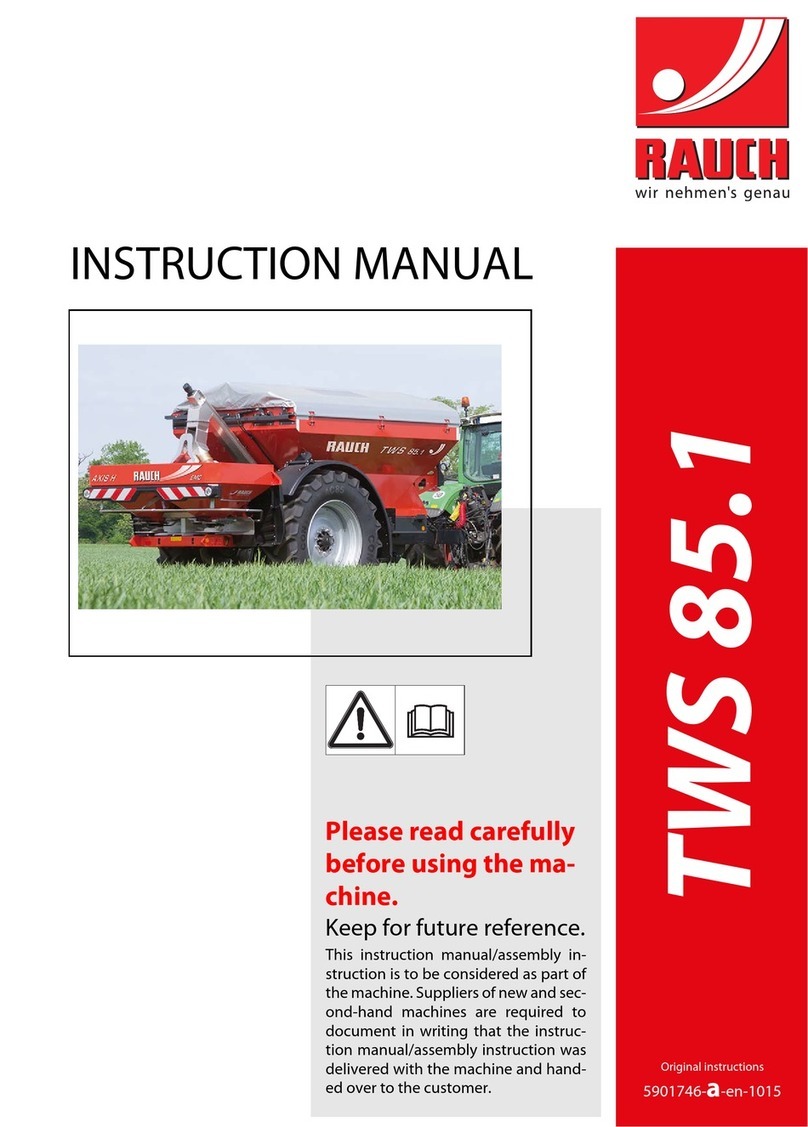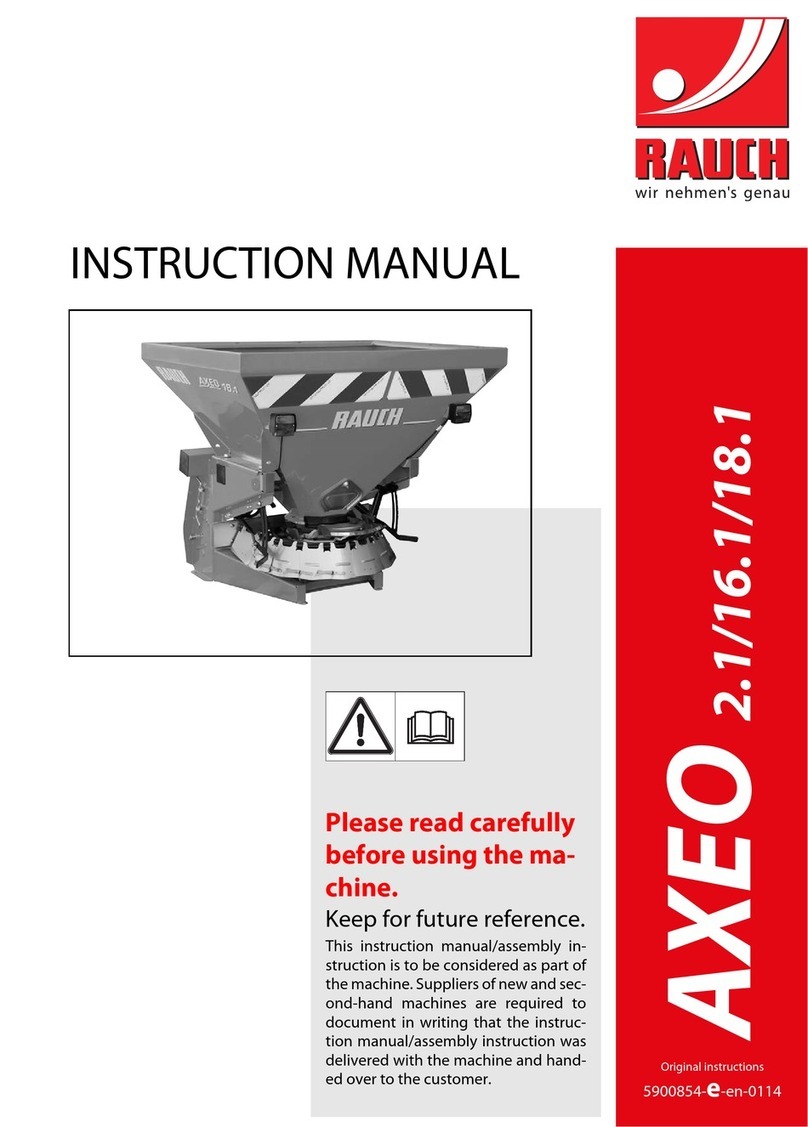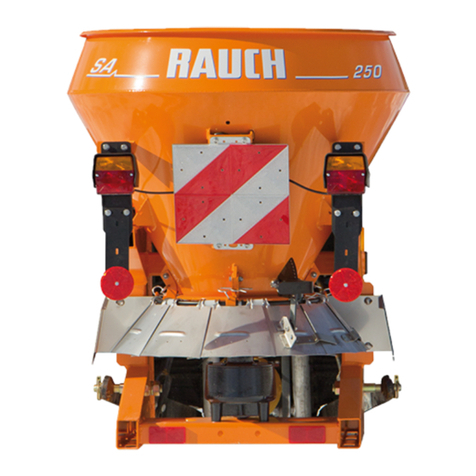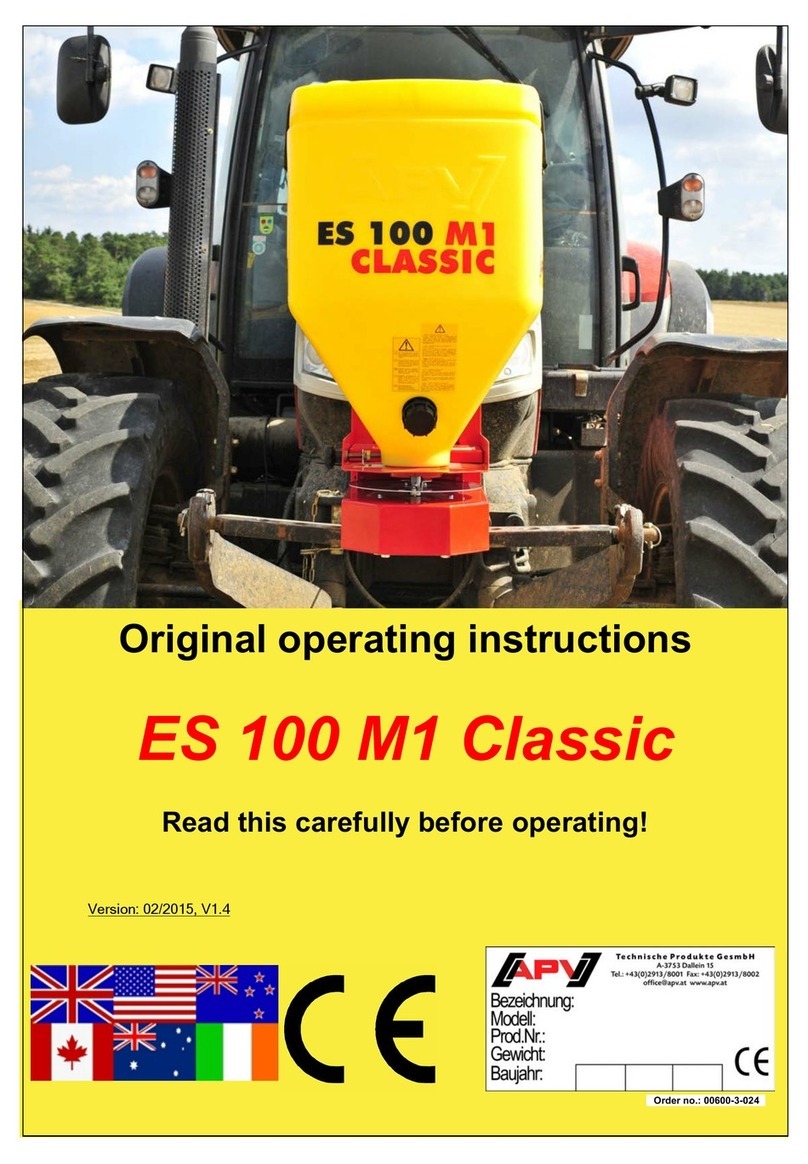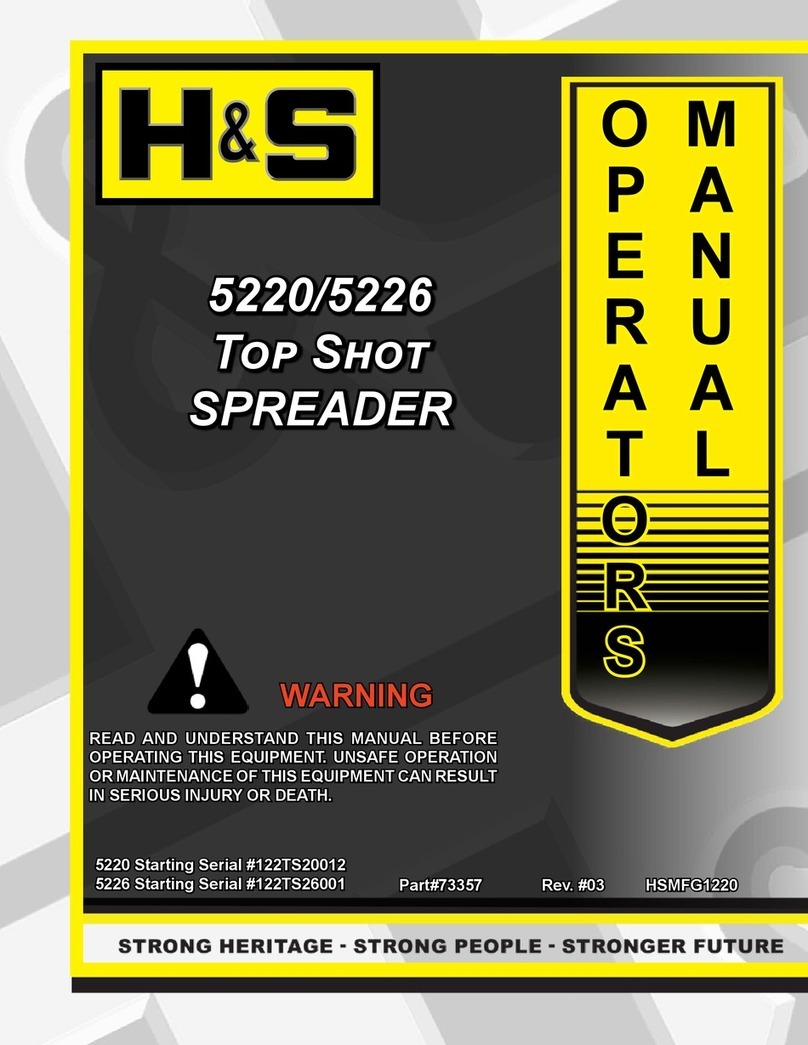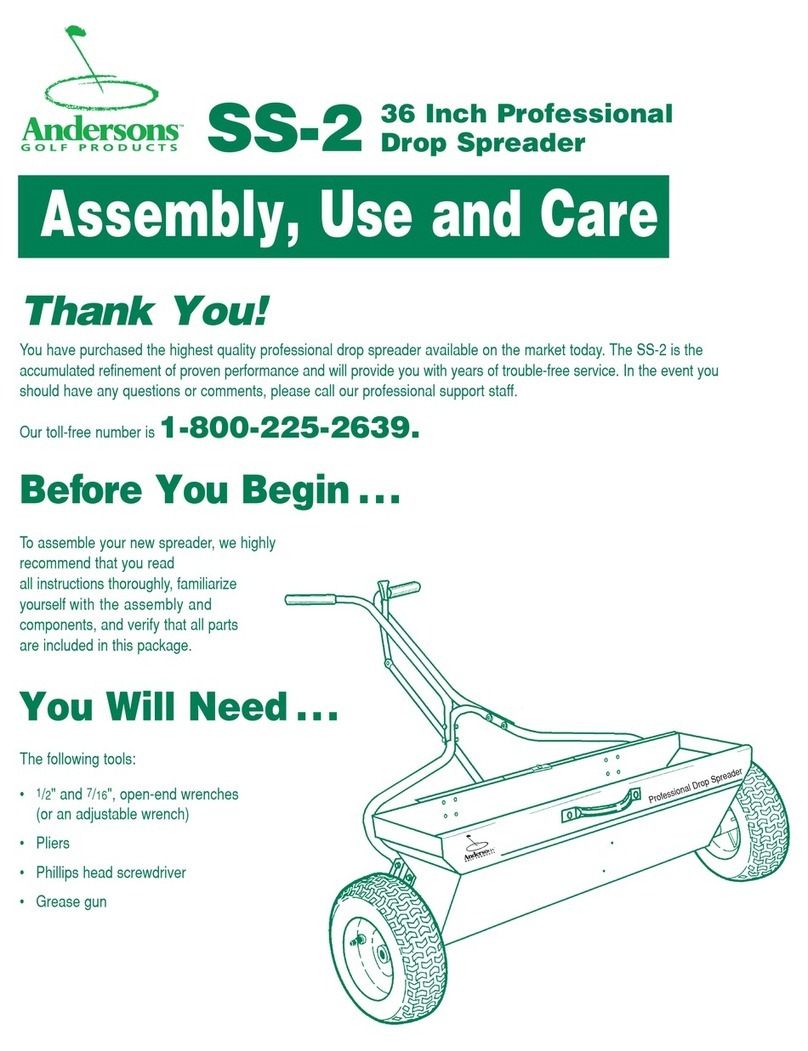
Table of Contents
III
6.7 Attaching the spreading unit to the machine . . . . . . . . . . . . . . . . . . . . . . . . . . . . . . 69
6.7.1 Requirements . . . . . . . . . . . . . . . . . . . . . . . . . . . . . . . . . . . . . . . . . . . . . . . 69
6.7.2 Dismantling the feeder mesh (LIME-PowerPack) . . . . . . . . . . . . . . . . . . . . 70
6.7.3 Dismantling the separating plate (LIME-PowerPack) . . . . . . . . . . . . . . . . . 71
6.7.4 Installing the separating plate (AXIS-PowerPack). . . . . . . . . . . . . . . . . . . . 72
6.7.5 Installing the feeder mesh (AXIS-PowerPack). . . . . . . . . . . . . . . . . . . . . . . 74
6.7.6 Attachment of the spreading unit. . . . . . . . . . . . . . . . . . . . . . . . . . . . . . . . . 77
6.7.7 Establishing connections . . . . . . . . . . . . . . . . . . . . . . . . . . . . . . . . . . . . . . . 79
6.8 Converting spreading units . . . . . . . . . . . . . . . . . . . . . . . . . . . . . . . . . . . . . . . . . . . 79
6.9 Filling the machine. . . . . . . . . . . . . . . . . . . . . . . . . . . . . . . . . . . . . . . . . . . . . . . . . . 81
6.10 Checking the level . . . . . . . . . . . . . . . . . . . . . . . . . . . . . . . . . . . . . . . . . . . . . . . . . . 83
6.11 Camera for rear view monitoring . . . . . . . . . . . . . . . . . . . . . . . . . . . . . . . . . . . . . . . 86
7 Spreading operation 87
7.1 General Instructions. . . . . . . . . . . . . . . . . . . . . . . . . . . . . . . . . . . . . . . . . . . . . . . . . 87
7.2 Closing the cover. . . . . . . . . . . . . . . . . . . . . . . . . . . . . . . . . . . . . . . . . . . . . . . . . . . 89
7.3 Setting the speed of the conveyor belt . . . . . . . . . . . . . . . . . . . . . . . . . . . . . . . . . . 91
7.4 Spreading fertiliser (AXIS-PowerPack) . . . . . . . . . . . . . . . . . . . . . . . . . . . . . . . . . . 92
7.4.1 Spreading operation procedure with AXENT 100.1. . . . . . . . . . . . . . . . . . . 92
7.4.2 Information on the fertiliser chart . . . . . . . . . . . . . . . . . . . . . . . . . . . . . . . . . 93
7.4.3 Setting the machine on the ISOBUS terminal . . . . . . . . . . . . . . . . . . . . . . . 94
7.4.4 Set the working width . . . . . . . . . . . . . . . . . . . . . . . . . . . . . . . . . . . . . . . . . 97
7.4.5 Setting the drop point . . . . . . . . . . . . . . . . . . . . . . . . . . . . . . . . . . . . . . . . 100
7.4.6 Adjusting the application rate . . . . . . . . . . . . . . . . . . . . . . . . . . . . . . . . . . 101
7.4.7 Spreading in the headland. . . . . . . . . . . . . . . . . . . . . . . . . . . . . . . . . . . . . 102
7.4.8 Spreading sideways on the slope . . . . . . . . . . . . . . . . . . . . . . . . . . . . . . . 104
7.5 Spreading lime (LIME-PowerPack) . . . . . . . . . . . . . . . . . . . . . . . . . . . . . . . . . . . . 105
7.5.1 Spreading operation procedure with AXENT 100.1. . . . . . . . . . . . . . . . . . 105
7.5.2 Setting the drop point . . . . . . . . . . . . . . . . . . . . . . . . . . . . . . . . . . . . . . . . 106
7.5.3 Setting the machine for lime spreading . . . . . . . . . . . . . . . . . . . . . . . . . . . 109
7.6 Discharging residual material . . . . . . . . . . . . . . . . . . . . . . . . . . . . . . . . . . . . . . . . 110
7.6.1 Notes on safety . . . . . . . . . . . . . . . . . . . . . . . . . . . . . . . . . . . . . . . . . . . . . 110
7.6.2 Emptying the large area spreader . . . . . . . . . . . . . . . . . . . . . . . . . . . . . . . 111
7.7 Switching off and uncoupling the large area spreader. . . . . . . . . . . . . . . . . . . . . . 112
8 Faults and possible causes 117
9 General maintenance and servicing 119
9.1 Safety. . . . . . . . . . . . . . . . . . . . . . . . . . . . . . . . . . . . . . . . . . . . . . . . . . . . . . . . . . . 119
9.2 Maintenance schedule. . . . . . . . . . . . . . . . . . . . . . . . . . . . . . . . . . . . . . . . . . . . . . 120
9.2.1 General maintenance schedule . . . . . . . . . . . . . . . . . . . . . . . . . . . . . . . . 120
9.2.2 Maintenance schedule for axles and brake system. . . . . . . . . . . . . . . . . . 120
9.2.3 Maintenance schedule for hydraulic system . . . . . . . . . . . . . . . . . . . . . . . 120
9.2.4 Electric and electronic equipment . . . . . . . . . . . . . . . . . . . . . . . . . . . . . . . 122
9.2.5 Oil change interval. . . . . . . . . . . . . . . . . . . . . . . . . . . . . . . . . . . . . . . . . . . 124
9.3 Cleaning. . . . . . . . . . . . . . . . . . . . . . . . . . . . . . . . . . . . . . . . . . . . . . . . . . . . . . . . . 125
9.3.1 Cleaning the bearings of the guide rollers . . . . . . . . . . . . . . . . . . . . . . . . . 125
9.3.2 Draining the cleaning water . . . . . . . . . . . . . . . . . . . . . . . . . . . . . . . . . . . . 126
